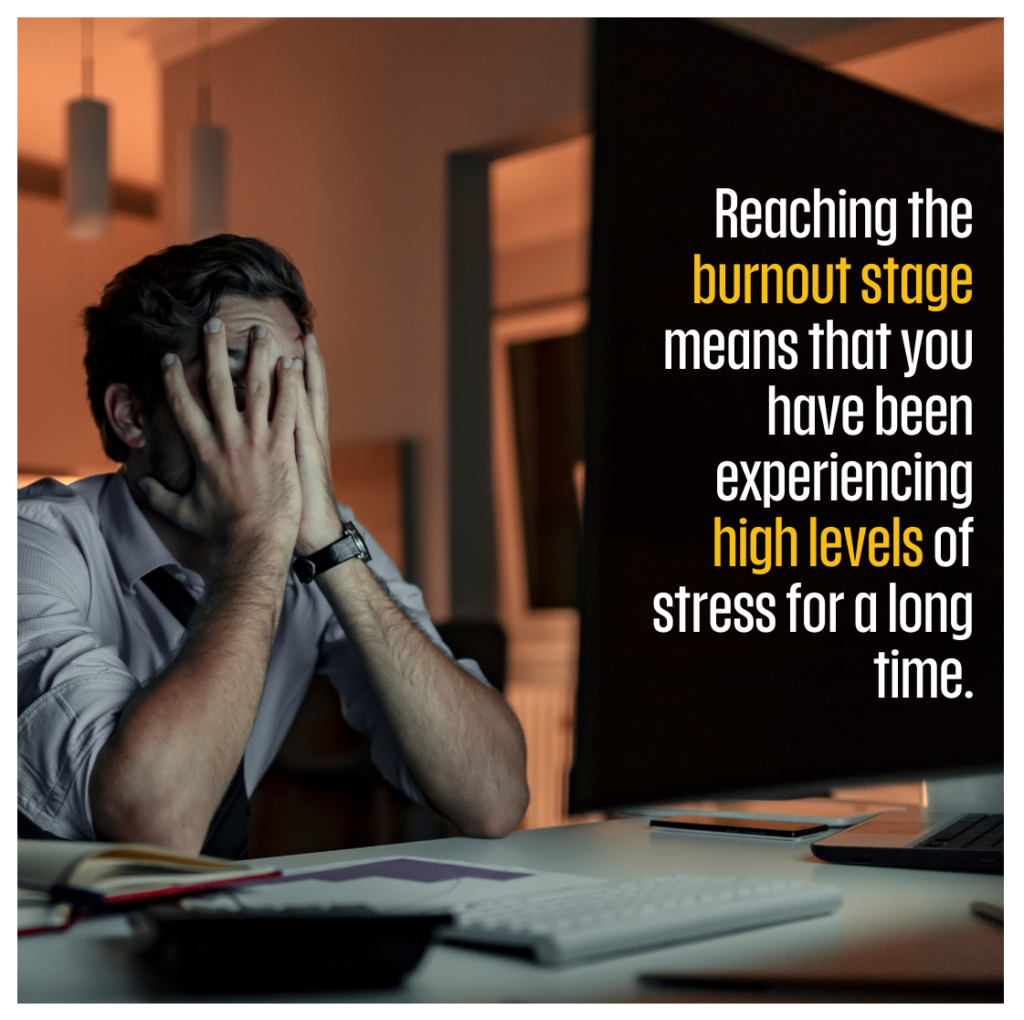Burnout is a common experience that many of us share. Some folks find that their burnout comes from the boundaries they are or are not setting within their daily lives, particularly within their work environments (Bruce, 2009). It is important to recognize your symptoms of burnout, what boundaries you might need to maintain a work/life balance, and also how to set these boundaries for long term sustainability.
What does burnout look like?
There is a difference between healthy stress and burnout. For example, stress accompanies all types of life changes whether they are positive, negative, or neutral and some amount of it is necessary to keep us motivated in our day to day life (Bruce, 2009). However, there is a tipping point with stress that leads to burnout, particularly in reference to the workplace environment.
Some warning signs to look out for that might indicate you have left the healthy stress zone and begun tipping towards burnout at work would include: feeling tired or irritable, having physical manifestations of pain (headaches, body aches, appetite changes), and mental/emotional symptoms such as hopelessness, a feeling of being trapped, and increased negative cognitions about yourself (Bruce, 2009; Sorenson, 2007).

Reaching the burnout stage means that you have been experiencing high levels of stress for a long time and it is helpful to examine the work environment itself, the tasks you are doing, and also how you play a role in controlling your levels of stress (Bruce, 2009).
Maintain balance, understanding boundaries…
What can we do to make sure we are playing an active role in advocating for ourselves, reducing our stress to a healthy amount, and avoiding symptoms of burnout? The answer is having boundaries that are clear and concise. Boundaries are the limits we set in each sphere of our lives that let others know what we will and will not do, and invite a chance for healthy discussion about our roles in those areas (TherapistAid, 2016b).
When our boundaries are too flexible or too permeable, we run the risk of things like taking work home with us after hours, or leaving other important personal commitments to attend work functions (Bruce, 2009; Bulger et al., 2007). If our boundaries are too rigid, we might avoid relationships and have difficulty asking for help. In order to maintain balance, healthy boundaries must take your own values and opinions into consideration, you must be able to communicate them, and you must be okay when others do not agree to them–boundaries are about our own actions, not others’ (TherapistAid, 2016a; TherapistAid, 2016b).

How to set boundaries to avoid burnout?
Most people find that it is difficult to set boundaries in general, but that it can be particularly daunting to set boundaries at work. The best way to avoid burnout is to be aware of the stressors in your environment, figure out what symptoms you are experiencing, and take actions to lower the stress (Sorenson, 2007). Part of what you can do is to know your boundaries ahead of time and plan key phrases to use when a boundary situation arises (TherapistAid, 2016a).
For example, you might say “I’m not feeling comfortable with this situation” or “ this isn’t working for me.” It’s also important to use confident body language, be respectful, plan ahead for situations where you’re able, and to compromise where appropriate–making sure that the boundary is neither too rigid nor too flexible (TherapistAid, 2016a; TherapistAid, 2016b).
Other ways to reduce work stress might include making sure to prioritize your health essentials (exercise, food, and sleep), understanding job expectations, leaving work on time, asking for help, taking time off, and saying “no” when you simply do not have capacity for a project (Bruce, 2009).
Conclusion
It is possible to maintain a healthy work/life balance and avoid burnout by practicing having healthy boundaries (TherapistAid, 2016b). In order to do so, it is important to explore your own values and find what works best for you and is comfortable for you to maintain. For further boundary exploration, please visit therapistaid.com.
References
- Bruce, S. P. (2009). Recognizing stress and avoiding burnout. Currents in Pharmacy Teaching and Learning, 1(1), 57–64. https://doi.org/10.1016/j.cptl.2009.05.008
- Bulger, C. A., Matthews, R. A., & Hoffman, M. E. (2007). Work and Personal Life Boundary Management: Boundary Strength, Work/Personal Life Balance, and the Segmentation-Integration Continuum. Journal of Occupational Health Psychology, 12(4), 365–375. https://doi.org/10.1037/1076-8998.12.4.365
- Sorenson, R. D. (2007). Stress management in education: warning signs and coping mechanisms. Management in Education, 21(3), 10–13. https://doi.org/10.1177/0892020607079985
- TherapistAid. (2016a). Setting Boundaries. https://www.therapistaid.com/worksheets/setting-boundaries
- TherapistAid. (2016b). What are personal boundaries? https://www.therapistaid.com/worksheets/boundaries-psychoeducation-printout









0 Comments